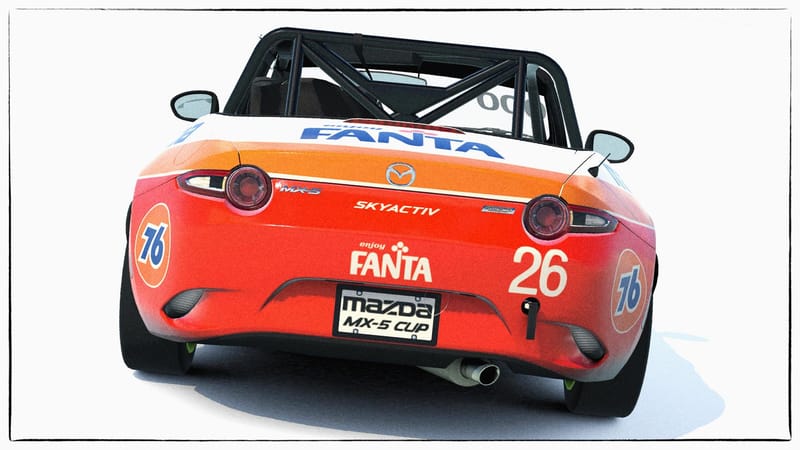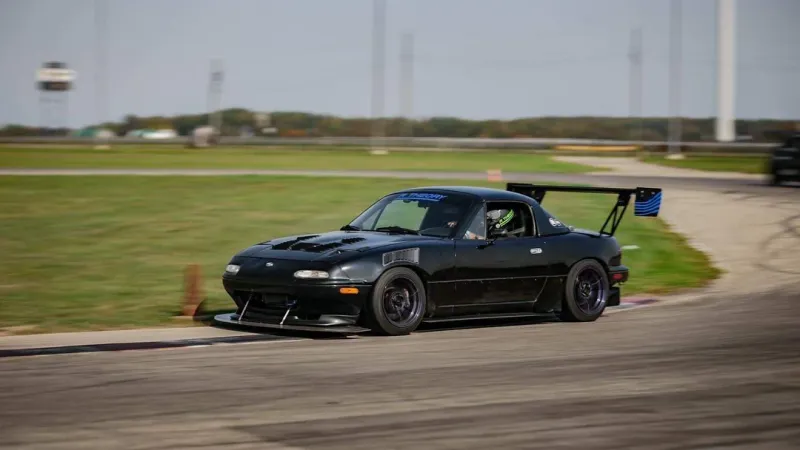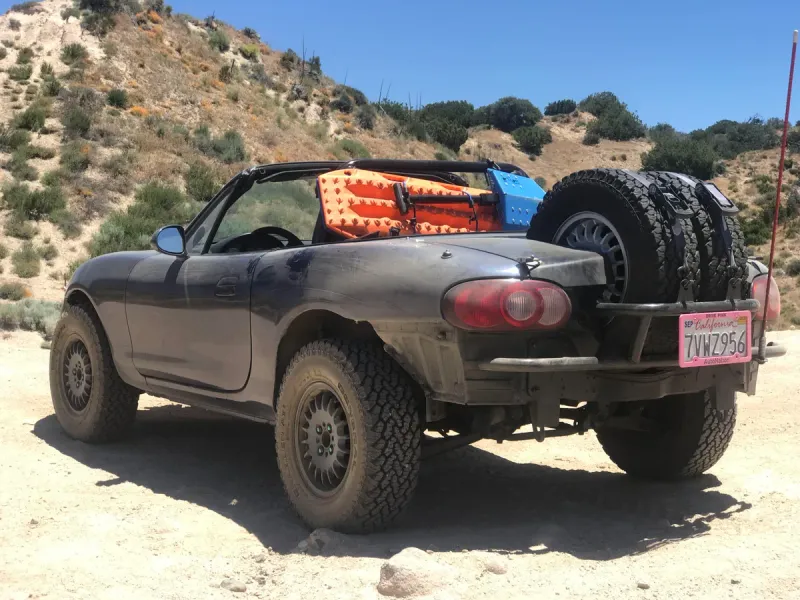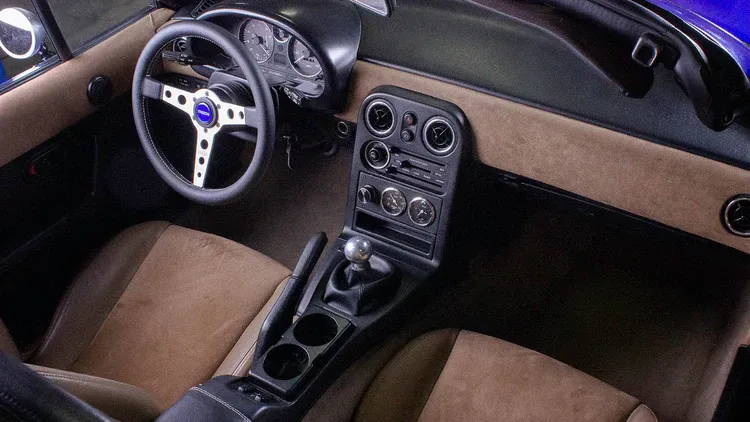Understanding and Maintaining Miata Chassis Bracing
While the miata delivers unmatched open-air fun, the lack of a fixed roof reduces structural rigidity, leading to “floppiness” during spirited driving. This guide explores how that affects handling and how bracing upgrades can restore confidence behind the wheel.
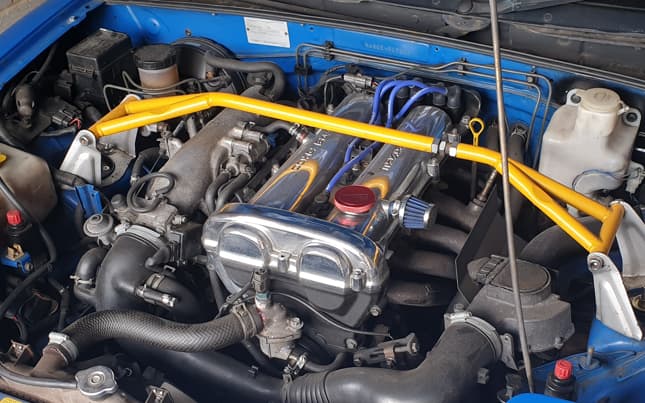
There's nothing quite like driving a Mazda Miata down an open road, especially with the top down along scenic routes like the California coastline. The Miata has always been legendary for its pure, engaging driving experience. However, the very thing that makes this car so appealing, the convertible roof, is also its biggest compromise. Without a fixed roof, the Miata suffers from noticeable chassis flexibility, or what enthusiasts affectionately (or perhaps not so affectionately) call “floppiness.” This lack of rigidity impacts the Miata’s handling, predictability, and overall driving confidence, especially during spirited driving.
Why the Miata Chassis is Flexible
In a typical hard-roof car, the roof isn't just there to keep you dry; it’s a critical structural component. It distributes stress and maintains rigidity by linking all sides of the car together. However, convertibles like the Miata sacrifice this structural advantage to give drivers that coveted open-air experience. Without the roof’s support, chassis flex becomes more evident, especially during aggressive cornering or uneven road conditions.
The Miata’s main weak points include frame rails underneath the vehicle, front shock towers and the cowl area (near the firewall), the transmission tunnel and floor pan, and the door openings. The absence of robust B-pillars and the solid roof structure only amplifies these weaknesses.
This increased flexibility leads to several noticeable downsides while driving. Handling precision can suffer, suspension geometry becomes unstable, and the car generally feels less predictable when pushed hard. Additionally, chassis flex often results in more cabin rattles, squeaks, and vibrations, impacting comfort and driving pleasure.

Benefits of Miata Chassis Bracing
Fortunately, chassis bracing helps address these issues by adding structural rigidity where it matters most. Bracing components give the suspension a more stable foundation, significantly improving steering response, reducing body roll, and providing better cornering stability.
Beyond performance improvements, good chassis bracing dramatically reduces cabin noise. Fewer rattles and squeaks make every drive more enjoyable. Additionally, certain types of chassis braces, especially door bars combined with roll bars, enhance crash protection by reinforcing occupant safety zones.
Types of Miata Chassis Bracing (Detailed Breakdown)
Door Bushings
Door bushings replace the soft factory rubber components with sturdier aftermarket versions (such as those from Flyin’ Miata). These bushings minimize door movement, cutting down cabin noise and adding subtle but meaningful structural rigidity. Installation is straightforward, involving only basic tools and around 15-30 minutes per side.
Cowl Stabilizer Braces
These braces connect the Miata’s stronger firewall/cowl area to its weaker front shock towers. Their purpose is to reduce front-end flex from cornering, braking, and uneven road surfaces. Installation is slightly more involved, usually requiring drilling and sandwiching braces between firewall and shock towers. Typically, this is about a 1-2 hour DIY project per side. After installation, drivers immediately notice improved steering feel and front-end predictability.

Frame Rail Braces (Flyin’ Miata Frame Rails)
Frame rail braces reinforce the thin factory rails running underneath the Miata. They're essential because these rails are vulnerable to damage and flex. By bolstering them with heavy-duty braces, you significantly enhance chassis rigidity. Installation involves removing seats and carpets, drilling into factory rails, and applying rust-protective coatings. It’s typically a 3-5 hour project, but the results speak for themselves, with a major reduction in mid-chassis flex and greater stability during spirited drives.
Door Bars (Combined with Roll Bar)
Door bars attach from the roll bar area down to the floor pan near the doors. This combination strengthens the side-impact protection and significantly stiffens the car longitudinally. Installation involves moderate effort, including minor drilling and carpet trimming, and it is usually done alongside a roll bar install. The payoff is huge: dramatically improved side-impact safety, significantly reduced chassis flex, and a noticeably more rigid overall feel.

DIY Method for Measuring Chassis Flex
If you’re curious about exactly how much your Miata flexes, you can set up a simple DIY test. All you need is a laser pointer mounted securely (using something like a GoPro mount), a target (like a cardboard sheet), and ramps or jacks to simulate chassis flex.
First, set your baseline laser position with the car stationary. Then raise different corners or ends of the car to simulate flex. Mark and compare laser displacement under different scenarios. Repeat this test after installing braces to clearly see your improvement in rigidity. Even small reductions in laser movement indicate meaningful rigidity gains.
Understanding X-Brace Functionality
You might have heard of X-braces in newer Miatas or the Fiat 124 Spider. OEM braces tend to be somewhat minimalistic, engineered to handle specific torsional stresses. An effective X-brace counters twisting along the transmission tunnel, typically resisting alternating tension and compression forces along diagonal axes.
While OEM braces get the job done, aftermarket braces often use thicker materials and improved designs, further boosting rigidity and performance. For enthusiasts looking to push their Miata harder, aftermarket X-braces can provide a noticeable difference in stiffness.
Real-World Driving Impressions After Installation
After installing chassis bracing components, the improvement is immediately apparent. Cabin rattles and squeaks noticeably diminish, creating a quieter, more comfortable environment. Steering response and suspension feel become sharper and more predictable, resulting in enhanced driving confidence. The car simply feels more planted, precise, and enjoyable to drive aggressively.
Considering the total investment (usually around $750 for a comprehensive bracing kit), the tangible benefits to driving enjoyment, comfort, and safety definitely justify the cost.
Recommended Chassis Bracing Kit (Example Setup)
Here's a tried-and-tested combination that many Miata enthusiasts swear by:
- Door Bushings (Flyin' Miata): Around $60
- Cowl Stabilizer Braces (V8 Roadsters): Approximately $200
- Frame Rails (Flyin’ Miata): About $250
- Door Bars (Zerek): Roughly $240
Total investment is around $750, an excellent value considering the noticeable improvements.
Chassis Brace Maintenance Tips
Once installed, maintaining your chassis braces is straightforward but essential. Regularly check bolt torque to ensure all hardware stays tight. Inspect braces periodically for signs of corrosion, particularly in drilled areas. Quickly address any rust by reapplying rust-protective coatings or paint, especially in harsher climates.
For most Miata enthusiasts, investing in chassis bracing is absolutely worth it. You get a balanced improvement in handling, comfort, and safety without sacrificing any of the charm and enjoyment of open-air driving. Whether your goal is weekend canyon carving, occasional track use, or simply enhancing daily driving enjoyment, quality chassis bracing makes your Miata an even more rewarding car to drive.
Always choose high-quality, well-reviewed braces from trusted brands. Align your upgrades with your intended driving style, casual cruising, spirited road use, or track days. Lastly, keep an eye on brace condition and effectiveness over time, making adjustments as necessary.
By deeply understanding and proactively maintaining your Miata’s chassis bracing, you’ll significantly enhance your driving pleasure, safety, and overall ownership experience, making every drive feel exactly as Mazda intended: fun, engaging, and pure.

